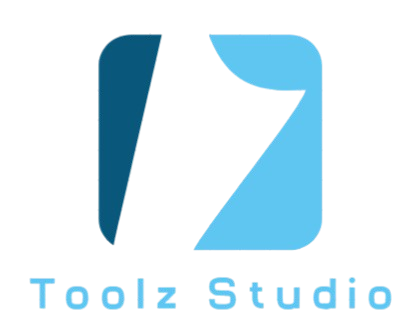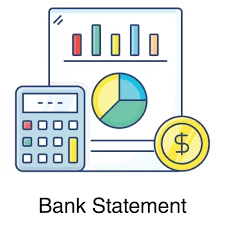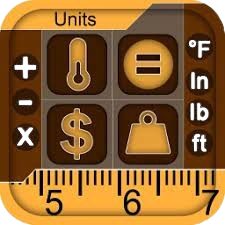Complete Guide to Hebrew Date Conversion
What is a Hebrew Date Converter?
A Hebrew Date Converter is a specialized tool designed to translate dates between the Gregorian calendar (the standard international calendar) and the Hebrew calendar (also known as the Jewish calendar). This essential tool bridges the gap between two fundamentally different calendar systems, enabling accurate conversion for religious observances, historical research, and cultural understanding.
The Gregorian calendar is a solar calendar with 365 days (366 in leap years), while the Hebrew calendar is lunisolar, meaning it's based on both lunar months and solar years. This creates a complex system where Hebrew dates don't align directly with Gregorian dates, making conversion tools essential for anyone working with both calendar systems.
Why Use a Hebrew Date Converter?
Hebrew date conversion serves numerous practical and spiritual purposes across various communities and professions:
- Religious Observance: Planning Jewish holidays, Shabbat times, and ritual observances that follow the Hebrew calendar
- Lifecycle Events: Calculating Hebrew dates for bar/bat mitzvahs, yahrzeits (anniversary of death), and wedding planning
- Historical Research: Translating historical documents, genealogical records, and academic studies
- Educational Purposes: Teaching about Jewish culture, history, and calendar systems
- Business Applications: Scheduling for kosher food production, Jewish community organizations, and religious institutions
- Personal Planning: Tracking Hebrew birthdays, anniversaries, and family traditions
How the Hebrew Date Converter Tool Helps
Our advanced Hebrew Date Converter offers several key advantages that make it the preferred choice for accurate date conversion:
- Bidirectional Conversion: Convert seamlessly from Gregorian to Hebrew or Hebrew to Gregorian with equal accuracy
- Leap Year Handling: Automatically accounts for both Gregorian leap years and Hebrew leap months (Adar II)
- Day of Week Display: Shows the corresponding day of the week in both calendar systems
- Privacy-Focused: All calculations are performed client-side, ensuring your data never leaves your device
- Mobile Responsive: Works perfectly on all devices, from smartphones to desktop computers
- Instant Results: Real-time conversion with no waiting or server delays
- Copy Functionality: Easy result copying for use in other applications
How the Hebrew Calendar Works
Understanding the Hebrew calendar's structure is crucial for accurate date conversion. The Hebrew calendar is a sophisticated lunisolar system that balances lunar months with solar years through a complex intercalation system.
Basic Structure:
- Year Length: Common years have 12 months; leap years have 13 months
- Month Length: Months alternate between 29 and 30 days based on lunar cycles
- Leap Years: Occur 7 times in every 19-year cycle (years 3, 6, 8, 11, 14, 17, 19)
- Day Beginning: Each day begins at sunset, not midnight
| Month Number | Hebrew Name | English Name | Approximate Gregorian Equivalent | Days |
|---|---|---|---|---|
| 1 | תשרי | Tishrei | September-October | 30 |
| 2 | חשון | Cheshvan | October-November | 29/30 |
| 3 | כסלו | Kislev | November-December | 29/30 |
| 4 | טבת | Tevet | December-January | 29 |
| 5 | שבט | Shevat | January-February | 30 |
| 6 | אדר | Adar | February-March | 29 |
| 7 | ניסן | Nisan | March-April | 30 |
| 8 | אייר | Iyar | April-May | 29 |
| 9 | סיון | Sivan | May-June | 30 |
| 10 | תמוז | Tammuz | June-July | 29 |
| 11 | אב | Av | July-August | 30 |
| 12 | אלול | Elul | August-September | 29 |
| 13 | אדר ב׳ | Adar II | Added in leap years | 29 |
Step-by-Step Guide: How to Use the Tool
Follow these simple steps to convert dates accurately between calendar systems:
For Gregorian to Hebrew Conversion:
- Ensure the "Gregorian to Hebrew" option is selected (it's the default)
- Click on the date input field and select your desired Gregorian date
- Click the "Convert Date" button
- View the converted Hebrew date with full details including day of the week
- Use the "Copy Result" button to copy the conversion for use elsewhere
For Hebrew to Gregorian Conversion:
- Select the "Hebrew to Gregorian" radio button
- Enter the Hebrew day (1-30) in the day field
- Select the Hebrew month from the dropdown menu
- Enter the Hebrew year (minimum 3761)
- Click "Convert Date" to see the Gregorian equivalent
- Copy the result if needed using the copy button
Best Practices for Date Conversion
To ensure accuracy when using the Hebrew Date Converter, follow these best practices:
- Time Zone Awareness: Hebrew dates begin at sunset, which varies by location and season
- Leap Year Verification: Double-check leap year calculations, especially for dates near Adar/Adar II
- Historical Accuracy: For historical dates before 1582, consider that the Gregorian calendar wasn't yet adopted
- Regional Variations: Some Jewish communities may have slight variations in calendar observance
- Cross-Reference: For critical dates, verify results with multiple sources or consult a rabbi
Use Cases and Examples
Here are practical examples of how the Hebrew Date Converter can be used:
Religious Holidays:
Convert major Jewish holidays like Rosh Hashanah (1 Tishrei), Yom Kippur (10 Tishrei), or Passover (15 Nisan) to plan observances and celebrations.
Yahrzeit Observances:
Calculate the Hebrew anniversary date of a loved one's passing to properly observe yahrzeit candle lighting and memorial prayers.
Bar/Bat Mitzvah Planning:
Determine the exact Hebrew date when a child reaches 13 (bar mitzvah) or 12 (bat mitzvah) to plan the celebration.
Academic Research:
Translate historical dates in Jewish texts, documents, and genealogical records for scholarly work.
Business Scheduling:
Plan kosher food production schedules, synagogue events, and community programs around the Hebrew calendar.
SEO and Cultural Benefits
Using a Hebrew Date Converter provides several digital and cultural advantages:
- Content Accuracy: Ensure accurate dating in Jewish cultural content and websites
- SEO Optimization: Properly dated content helps with search engine optimization for Jewish cultural topics
- Cultural Sensitivity: Demonstrate respect for Jewish traditions by using correct Hebrew dates
- Educational Value: Enhance understanding of Jewish culture and calendar systems
- Community Engagement: Connect better with Jewish communities through accurate calendar awareness
Frequently Asked Questions (FAQs)
Conclusion
The Hebrew Date Converter is an essential tool for anyone working with both Gregorian and Hebrew calendar systems. Whether you're planning religious observances, conducting historical research, or simply exploring Jewish culture, this tool provides accurate, reliable, and private date conversion capabilities.
Our modern, mobile-responsive design ensures you can access precise Hebrew date conversions anywhere, anytime. With features like bidirectional conversion, leap year handling, and comprehensive date information, this tool serves both casual users and serious scholars equally well.
Start using the Hebrew Date Converter today to bridge the gap between calendar systems and deepen your understanding of Jewish timekeeping traditions. Whether converting a single date or planning an entire year of observances, our tool provides the accuracy and convenience you need.






